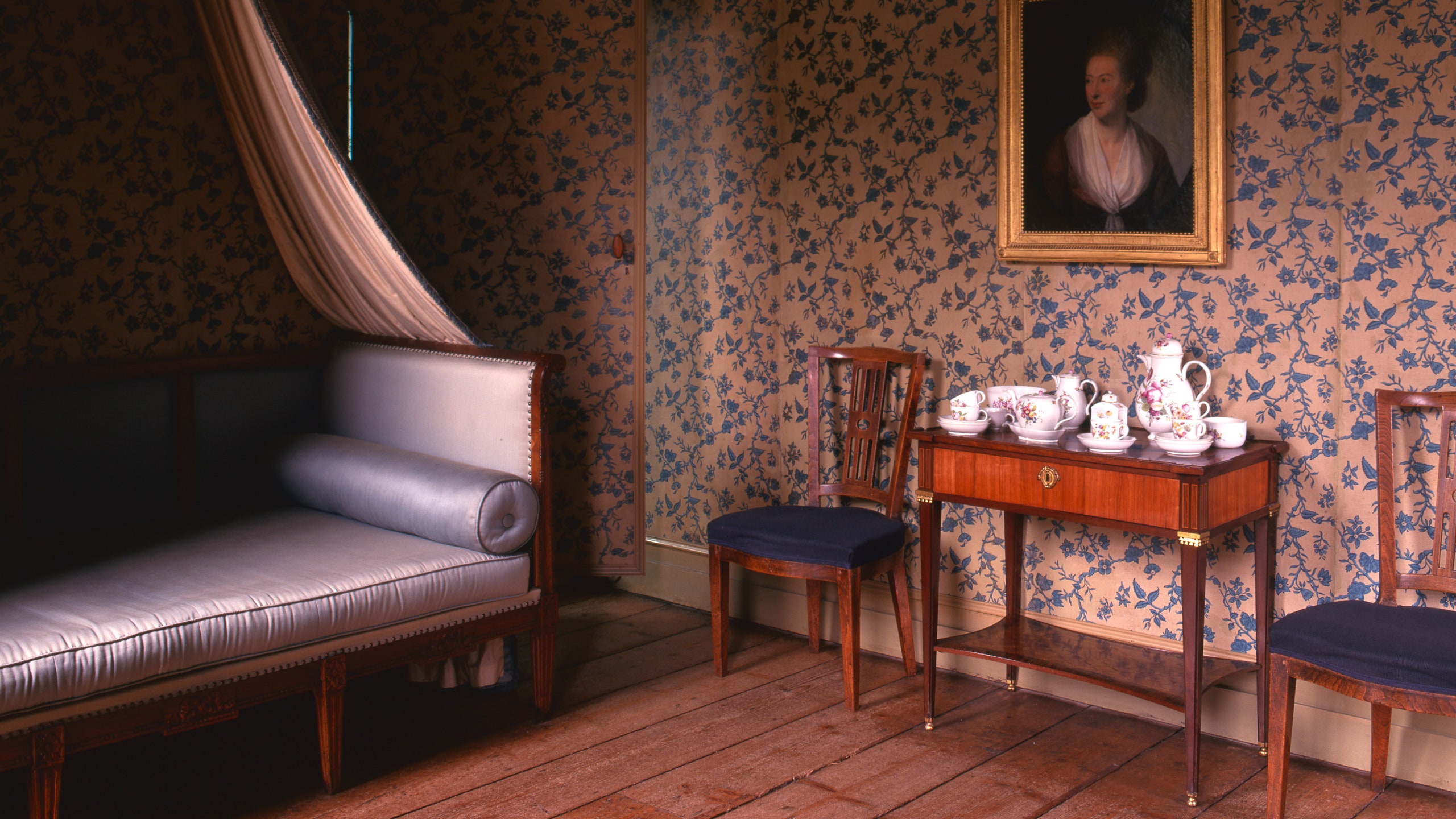‘And here I sit with my pen in hand and it moves across the paper according to the whims of a head full of imagination,’ wrote Isabelle Agneta Elisabeth van Tuyll van Serooskerken, sitting at her writing desk in her bedroom of Castle Zuylen in the heart of the Netherlands. Born on 20 October 1740, the eldest daughter of Helena Jacoba de Vicq and Diederik Jacob van Zuylen – Isabelle, or ‘Belle’ as she was called by her family and friends, grew up in the castle on the river Vecht, but from her earliest childhood it became clear that she was an outsider and would not conform to the norms that came with her noble rank.
Growing up in the second half of the 18th century meant that Belle was destined to marry a nobleman, have children and behave submissively towards her husband. One look at the portrait that the famous French painter and pasteliste Maurice Quentin de La Tour made of her in 1766, tells us that this strong-willed, independent and highly intelligent young woman with the porcelain-blue eyes and the peaches-and-cream complexion who studied at the University of Utrecht, received private lessons in mathematics and wrote poetry, was going to follow her own path.
‘Je n’ai aucun talent pour la soumission (I have no talent for subservience)’ was one of her favourite statements. She wrote it in French because when she was eight years old she spent a year in Geneva with her governess Mademoiselle Prévot to learn the language of Voltaire and Rousseau, and from then on French was the language in which she preferred to express herself.
When she published her novel, Le Noble, anonymously in 1763, her father was so infuriated by her indictment against the customs and mores of the aristocracy, that he bought the entire stock and had the books burned. One wonders if this incident was the beginning of a rift with her parents.
From then on the name of Belle van Zuylen became synonymous with scandal. Her forbidden love for Monsieur David-Louis Constant d’Hermanches, a married and much older Swiss nobleman who served in the Dutch Army, and her love affair with the Scottish writer James Boswell (1740–1795) whose proposal for marriage was thwarted by her father, would strengthen her rebellious attitude towards the established values. Belle the Rebel, whose beauty was immortalised in white marble by the famous French sculptor jean-Antoine Houdon (1741–1828), knew that the only way to escape the ‘golden cage’ of Castle Zuylen was marriage, and on the first of January 1771 she married Charles-Emanuel de Charrière (1735–1808) a Swiss nobleman who had been the tutor of her brother Willem-René and followed him to his château in Colombier.
Did the contrarian young woman who wrote that ‘marriage is only good to the extent that one can do almost nothing else’ think back to her years in Castle Zuylen? Did she ever feel homesick for her bedroom with its floral wallpaper and the writing desk by the window ? The rebellious Belle had become the respectable Madame de Charrière, author of several books, poetry, and plays who also wrote music and fell in love with 19-year-old journalist, writer and politician Benjamin Constant (1767–1830) who abandoned his beloved Zélide for the formidable Madame de Staël….
Madame de Charrière died in Colombier on the 27 December 1805 and was buried in the nearby churchyard. In 1998 we met the German artist and photographer Günther Förg (1952–2013), and when we told him that the cemetery had been cleared to make way for a tennis court he told us that from the window of his studio in Colombier he looked down at the spot where her grave once stood.
Belle van Zuylen wrote thousands of letters during her life. In one of them she wrote, ‘I would like to be from the land of everyone.’ Nothing is more reassuring than knowing she has achieved her goal.
